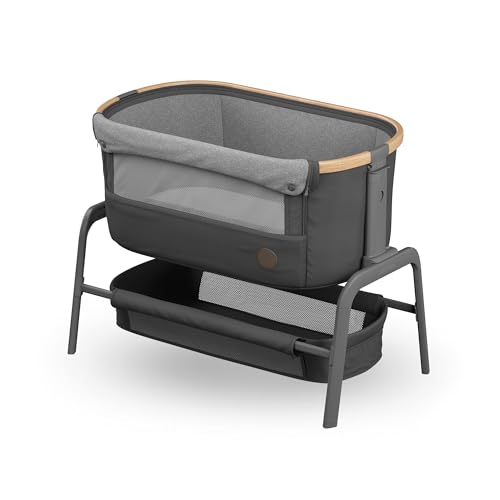- 작성자 Hollie
- 댓글 0건
- 조회 39회
- 작성일 2025.08.07
본문
Tots and Cots: A Comprehensive Guide for Parents
When it comes to guaranteeing a safe and comfortable sleeping environment for babies and toddlers, the choices moms and dads make-- ranging from cribs to cots-- can considerably impact their well-being. Today's post dives deep into the intricacies of choosing the best sleeping plans for tots, stressing security, style, performance, and how these options develop as a child grows.
Understanding Tots and Cots
Tots And Cots usually describe young children, especially toddlers aged between 1 to 3 years, while cots are the sleeping arrangements specifically developed for infants and toddlers. The proper sleeping equipment for this age consists of numerous types of cots, cribs, and toddler beds.
Kinds of Cots
Numerous styles exist to satisfy the diverse needs of both parents and kids. Below is a list outlining the most typical types of cots readily available:
Standard Crib
- A standard crib is created for babies and usually includes sides that can be gotten used to various heights.
Convertible Crib
- This kind of crib can convert into a young child bed, daybed, or full-sized bed as the kid grows, making it a long-lasting financial investment.
Portable Crib
- Likewise referred to as travel cots, these are lightweight and quickly foldable, ideal for traveling or smaller sized home.
Co-Sleeper
- A co-sleeper crib connects to the side of the moms and dads' bed, permitting for easy gain access to while making sure the baby has a separate and safe sleeping space.
Toddler Bed
- A young child bed is a small bed that looks like a standard bed however is designed particularly for young children, typically featuring security rails.
Mini Crib
- Mini cribs are smaller than basic cribs, making them an excellent choice for tight spaces, but they are ideal for infants just.
Security Considerations
Making sure safety is vital when choosing a cot for a child. Here are critical security standards parents ought to think about:
- Check for CPSC Certification: Ensure that the cot complies with the Consumer Product Safety Commission (CPSC) requirements.
- Prevent Drop-Sides: Cots with drop-sides have been linked to security risks, and the most recent safety guidelines forbid them.
- Use a Firm Mattress: A firm mattress decreases the risk of suffocation and need to fit comfortably within the cot.
- Keep Bedding Simple: Use a fitted sheet and avoid pillows, comforters, and stuffed animals that can present suffocation dangers.
- Follow Weight and Age Guidelines: Ensure the kid has actually not surpassed the cot's weight limit and is still within the recommended age.
Transitioning from a Cot to a Toddler Bed
The shift from a cot to a young child bed can be an emotional milestone for both parents and kids. Here are steps to relieve the transition:
Timing
Choosing when to shift can be subjective, but it's typically advised to make the switch between 18 months and 3 years, based upon elements like:
- Physical Ability: If the kid is climbing up out of the cot.
- Potty Training: Consider transitioning if the child is toilet training and needs simpler access.
- Behavior: Exhibiting signs of maturity, such as following instructions or expressing a desire for independence.
Tips for Making the Transition Smooth
Involve Your Child: Let the kid pick their new bed linen or bed decoration to impart excitement about the modification.
Keep Routine Consistent: Maintain the kid's bedtime routine to offer comfort throughout this period of change.
Discuss the Change: Discuss the shift to a young child bed positively, making it sound like an excellent experience.
Security Measures: Place the bed against the wall or usage bed rails to avoid falling throughout sleep.
Picking the Right Bed
When picking a young child bed, moms and dads need to consider elements like:
- Height: Low-profile beds are ideal for young children who might fall out during sleep.
- Resilience: Ensure the bed can withstand active play along with sleep.
- Design and style: Choose a design that matches the child's space and is appealing to the kid.
Picking the ideal cot for your kid can be a complicated process, but comprehending the alternatives offered, crucial safety factors to consider, and the ideal timing for transitioning to a toddler bed can make this journey much easier for moms and dads. Investing time and effort into these choices will ensure that your kid has a safe, comfy, and supporting sleep environment.
FAQs
1. What is the difference between a cot and a crib?
- A cot is usually a smaller sized bed developed for more youthful young children, while a crib is a bigger bed that is typically ideal for infants approximately 3 years of ages.
2. When should I move my child from a crib to a toddler bed?
- The shift time is generally between 18 months and 3 years; this change is based on the kid's physical capabilities and behavioral signs.
3. How can I guarantee my child is safe while sleeping?
- Constantly adhere to security requirements, use a company bed mattress with a basic bedding arrangement, and keep track of the cot's weight limit.
4. What should I do if my kid tries to climb up out of the cot?
- If your kid is climbing out, it might be time to consider transitioning to a young child bed to prevent falls.
5. Can I utilize the exact same bed mattress when transitioning?
- Generally, it is best to replace the crib bed mattress with one that is specific to the toddler bed. Guarantee it fits snugly and follows security requirements.
By considering these aspects, moms and dads can model healthy sleep practices and offer their children with a safe and secure environment that promotes peaceful sleep. Purchasing quality sleeping arrangements will add to the kid's total advancement and happiness.

댓글목록 0개
등록된 댓글이 없습니다.

